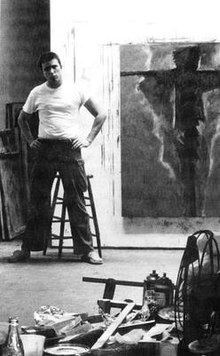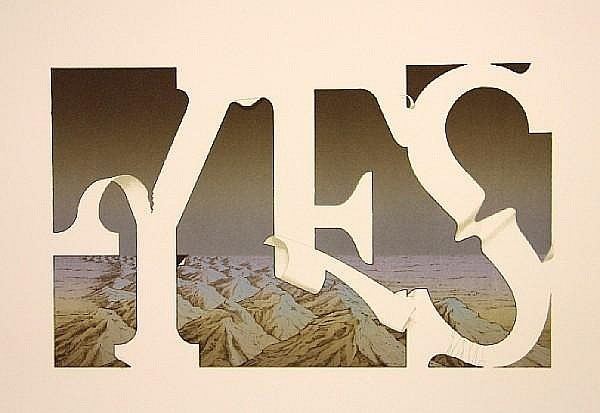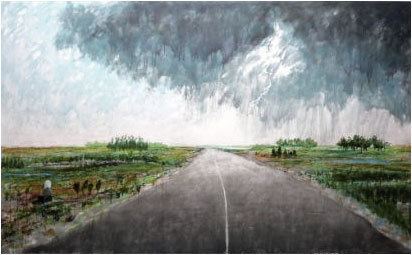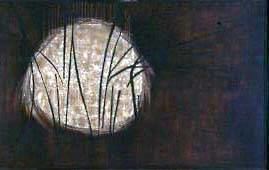Nationality American Movement Abstract Expressionist | Name Jack Boynton Role Artist | |
 | ||
Full Name James Wesley Boynton Periods Surrealism, Contemporary art, Modernism, Modern art, Abstract expressionism, Abstract art Similar People Rene Magritte, Andre Breton, Sigmund Freud | ||
Jack Boynton (January 12, 1928 – April 5, 2010) was an American artist.
Contents
- Biography
- Sixty fourth Exhibition of American Art 1961
- Recent Painting USA The Figure
- Jack Boynton and Richard Stout
- Exhibitions
- Selected Major Collections
- List of Works
- References

Biography

Jack Boynton was born in Fort Worth, Texas in 1928, and was known professionally as James until the early 1970s when he started signing as ???. He graduated from Lamar High School in 1945, received Bachelor of Fine Arts (1949) and Master of Fine Arts (1955). He worked as an instructor at University of Houston from 1955–57, San Francisco Art Institute from 1960–62, and as a professor at University of St. Thomas (Texas) from 1969-1985.

He began exhibiting paintings in 1950; has been included in numerous group exhibitions, nationally and internationally, since that time at museums, galleries and universities. Boynton was a key figure in the post-World War II Houston arts scene. According to a Houston Chronicle article written by Douglas Britt, Boynton garnered national attention in the 1950s and 1960s for his modernist, largely abstract paintings.
Sixty-fourth Exhibition of American Art (1961)

In 1961 J.M. Said in The Art Institute of Chicago (1961):

In the recent months much has been written and much has been said about a change of direction in Contemporary Painting and the imminent death of Abstract Expressionism and of action painting. This Sixty-fourth Exhibition of American Art. The sole purpose has been to present pictures which are as good as could be found in the hope that the visitor may discover for himself what the State of America Art is in 1961 or, at least, a part of it.
In 2008 Jack Boynton said:
Artists in Houston in the 50s, 60s and 70s would have been Jim Love, Dick Wray, Herb Mears, Dorothy Hood, Charles Pebworth. Lowell Collins still had status in the 50s, and Henri Gadbois. Mildred Dixon Sherwood had some prominence. Of course, people like Stella Sullivan, you know. Stella was sort of conservative, even then. The 50s was sort of the interim that Jerry MacAgy had big influence, and she had people that were either very enthusiastic about her, or were very negative about her. She didn’t seem to hit the halfway mark. Nobody was indifferent. Then in the 60s I moved to San Francisco, and back in ’62—and somewhere in that interim Sweeney came to town, and Sweeney sort of had sway for a while. by Sarah C. Reynolds
In 2009 Susie Kalil Said:
The term "breakthrough" is often used to denote a major accomplishment of an artist, the works in which he achieves indisputable progress. But what determines a "breakthrough"? What happens when an artist begins a new style? Does he shut off one room before entering another? Or does he extend the space that already exists? Spanning some six decades, Jack Boynton's paintings and works on paper (Lithographs) allow us to measure the way that one person's experiences and sensibility have been expressed in visual impulses. Significantly, Boynton turns arbitrariness into a fine art and does so without sticking to any one approach or medium. Rather, each encounter with a cultural symbol, everyday object or personal memory is reflected in the physical sensuality and structural clarity of his art. Oscillating between past and present, formal elegance and pressurized energy, the exhibition reveals Boynton to be an artist constantly changing and enlarging the sphere in which he functions. Through paintings, Boynton reflects the natural world in order to heighten awareness of our place in the universal.
Recent Painting USA: The Figure
In 1962, Alfred H. Barr, Jr. Said in (Recent Painting USA: The Figure) The Museum of Modern Art in New York:
Men have been painting their own image for many thousands of years but it is probable that never before, within one time and one country, has the human figure been painted with the prodigious variety of forms even this small exhibition suggests ....These human figures were painted in a period (a glorious period in American art) when the painted surface often functioned in virtual and even dogmatic independence of any represented image. Some of these pictures suggest uncertainty as to whether a painting in the 1960s can or cannot, should or should not, live by paint alone. Others seem more confident. Ambiguous or decisive, more strength to them!"
Jack Boynton and Richard Stout
They arrived in Houston within about eighteen months of each other, Jack Boynton coming first from Fort Worth, Still Freshly out of formal training at TCU. He brought with him the Modernist influences of the Fort Worth circle, and particularly the non-objective "post-circle" tendencies garnered through his association with the likes of Charles Williams, McKie Trotter and others. Richard Stout, a Beaumont native, arrived next. Coming to the city from the venerable Chicago Art Institute, he selected Houston as a home from which to launch a career and to perfect his energetic and dynamic paintings motif. Both young artists quickly set roots in Houston. They found encouragement here and developed a personal collegiality that led them to share a studio together for a time during the late 1950s through the early 1960s.
Exhibitions
Selected Major Collections
(in others as well as many private collections)
List of Works
(and many others.)
